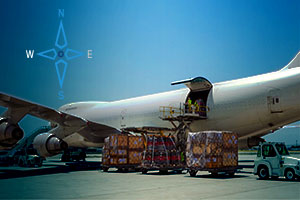
3 Ideas for Finding Air Capacity in the Transatlantic Lane | Transportfolio
If you have struggled lately to find available air capacity in the Transatlantic lane, you’re not alone. Capacity is hard to find in this lane, and the busiest time of the year for air shipping is just ahead. But there is hope that you can find the capacity you need if you act quickly. First, learn about the market trends that are currently impacting air capacity. Then, use these recommendations to develop a robust Transatlantic air strategy that will serve your business well.
The first thing to know is that tight air capacity isn’t limited to the Transatlantic. It’s a global phenomenon. According to the International Air Transport Association (IATA), air cargo demands grew at double the rate of capacity in 2017. The growth of ecommerce is expected to add continued momentum in the air cargo business worldwide in 2018. This matters, because as freight demand exceeds available capacity, the price you pay for space increases.
In the Transatlantic lane specifically, certain factors add more pressure to capacity and rates. In 2017, Europe saw the demise of some airlines at the same time as exports to the United States grew. In addition, air cargo is transported in two ways: most goes on cargo planes, but some moves on passenger flights. While we expect the number of summer cargo flights in the Transatlantic to remain the same when the winter airline schedule begins at the end of October, many of the summer passenger flights will be discontinued by then, further reducing capacity.
Unfortunately, this reduction in capacity will occur in the fourth quarter. Traditionally, peak season occurs from September to mid-December in the Transatlantic. And because ecommerce is growing as a percentage of the total air cargo business in this lane, orders placed before the Christmas holidays can be expected to put extra pressure on air volumes in Q4 2018.
How can you work through these issues in your supply chain? We recommend taking the following steps when we work with shipping customers:
- Take an inventory. Ideally, before summer ends, you should prepare an inventory of the capacity you expect to need during the winter season.
- Plan ahead. We work with your inventory to arrange for the space with the airlines. Ideally, we can secure capacity for you at general market rates before peak shipping season begins.
- Use consolidation programs. Air consolidation programs are a smart strategy to reduce capacity pressures, even as they lower rates and meet required transit times. Rather than increase volume per shipment, your goal is to ship smaller quantities more frequently. By creating a regular flow of goods, you can obtain better uplift opportunities with air carriers. As a freight consolidator, we mix your volumes with compatible cargo on a unit loading device (ULD) which is tendered to the airline to use available cargo space efficiently. Because we have air consolidation facilities on both sides of the Atlantic, the ULDs we build in Europe arrive at our own warehouses at destination for careful handling and final mile delivery so you have fewer missing, damaged, and partial shipments. Consolidation programs work for general freight (no dangerous goods or perishables) that has medium urgency. In addition, if you can ship lower deck cargo, to a maximum of 160 cm high, you will have even more flexibility in uplifting important freight, even during peak seasons.
Don’t be left behind in the race to find air capacity. As in so many areas of life, the better you plan for capacity and the quicker you act, the better success you will have at satisfying customer requirements at the best price possible. Fail to plan ahead, and you can expect higher ad hoc market rates when the amount of freight exceeds available capacity.
The information in this blog has been compiled with the greatest possible care, however, no rights whatsoever can be derived from its contents. C.H. Robinson does not guarantee, warrant or represent the accuracy or completeness or fitness for a particular purpose of the information contained herein.



